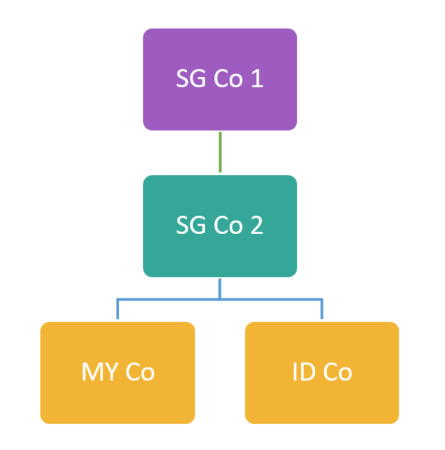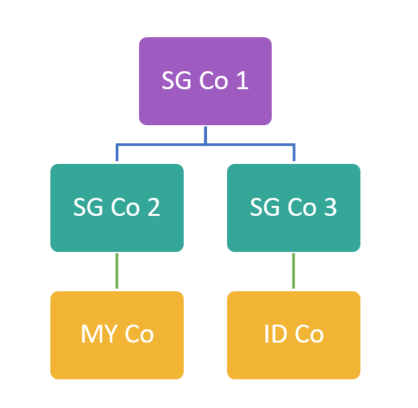Key elements to Selecting Your Investment Structure
As companies expand their supply chain across several countries, there is a need for businesses to take note of several key aspects to ensure that their chosen investment structure and business operations continue to run smoothly, and risks and remuneration are adequately distributed.
To be able to determine this, one needs to first understand “who is doing what”. Carrying out a functional analysis can help ascertain this and comprises of 3 key elements as follows:
1. Functions performed - This involves the various activities performed by different parties involved in the business and the extent of their functions. It is important to remember here that the key value drivers for each supply chain can vary based on the specific situation of each group.
2. Assets employed – This covers an analysis of tangible and intangible assets of the business across the supply chain.
3. Risks assumed – This is more difficult to delineate and assign when compared to the above two elements. It is often difficult to attribute risks to relevant parties, but to a large extent this can be included in contracts after carrying out a detailed risk analysis.
“To ensure risks assumed are appropriately assigned, we can carry out a risk analysis framework which comprises of 5 steps - from understanding economically significant risks, asserting a contractual assumption of risks, carrying out a functional analysis in relation to the risks, interpretation and allocation of the risk, and finally assigning the pricing of the transaction.” – Joanna Lam LY, speaking at the RSM Singapore webinar on “Structuring your Overseas Investments”.
The next important question companies need to address is in terms of what form of operational structure to adopt when investing overseas.
Consider the following case study - A company that would like to venture into Indonesia and Malaysia Markets would have to consider several factors before deciding the most tax efficient operational structure.
The supply chain structure that is adopted may have direct long term impacts on tax obligations as well as transfer pricing that the business would be subjected to.
In scenario 1: The local entities in Malaysia (MY Co) and Indonesia (ID Co) do not have heavy involvement in the business cycle and perform support functions. In this model, the Singapore Holding Company (SG Co) would carry out the main business activities for customers and be responsible for handling most of the operations/contracts. As companies grow and begin to invest in other countries, establishing subsidiaries in a manner that does not impact or drastically change the transaction structure becomes a primary concern.
SCENARIO 1

Figure representing Scenario 1 of the business structure.
In scenario 2: The local entities are involved in carrying out major operations of the business. To ensure tax efficiencies and effective transfer pricing in such a case, businesses have to consider several factors:
- What substances are required to justify the profits to be retained with the relevant parties?
- How to structure the services to be provided by the Singapore Company (SG Co) to the Indonesian Company (ID Co) and the Malaysian Company (MY Co)?
- What are the Routine Support Services vs High Value Added Services?
- How to price the services?
- What are the direct tax and indirect tax implications?
SCENARIO 2

Figure representing Scenario 2 of the business structure.
3 Main Types of Investment Structures:
Businesses looking to expand their presence overseas can make use of different types of investment structures to suit varying needs. Here are a few case structures that businesses often consider-
Direct Holding Share Structure:

- The main holding company (Singapore Company) invests directly into the subsidiary companies located in Malaysia and Indonesia (e.g., MY Co & ID Co).
- Such a structure is efficient as dividends would not be subject to tax in Singapore.
- Countries with Avoidance of Double Taxation Agreements (DTA) will be able to benefit in this case.
- Such structures would typically have a low maintenance cost.
Two-tier Holding Structure:

- The main holding company (Singapore Company) invests directly into the subsidiary companies located in Malaysia and Indonesia (e.g., MY Co & ID Co).
- Such a structure is efficient as dividends would not be subject to tax in Singapore.
- Countries with Avoidance of Double Taxation Agreements (DTA) will be able to benefit in this case.
- Such structures would typically have a low maintenance cost.
Multiple-tier Holding Structure:

- In this type of structure, each holding company has its own subsidiary located overseas.This allows for an easy disposal if needed. For example, if the investors wish to dispose of the Malaysian business (MY Co), then SG Co 1 would only need to sell off SG Co 2.
- This gives investors a lot of flexibility, despite have a higher maintenance cost structure.
Conclusion:
As businesses evolve and grow, they will need to redesign their operational flows by considering both commercial realities and tax efficiencies. The former would need to drive the latter to ensure that solutions brought out serve all parties and can be implemented efficiently.
Companies also need to consider inter-company pricing as cross border investments increase within your business. Analysis and planning ahead is what is going to be a game changer in the coming years for businesses to succeed.
Lastly, it is important to remember that no business structure can remain the same forever. As economic fundamentals change, it is vital that companies begin to examine restructuring options. At RSM, our team of experts can help you determine the best fit for you to reach your business objectives and grow internationally.
The contents of this article are extracted from the RSM webinar on “Structuring your Overseas Investments” - with speakers Thomas Chan and Pricing Joanna Lam, Partners at RSM Singapore.


